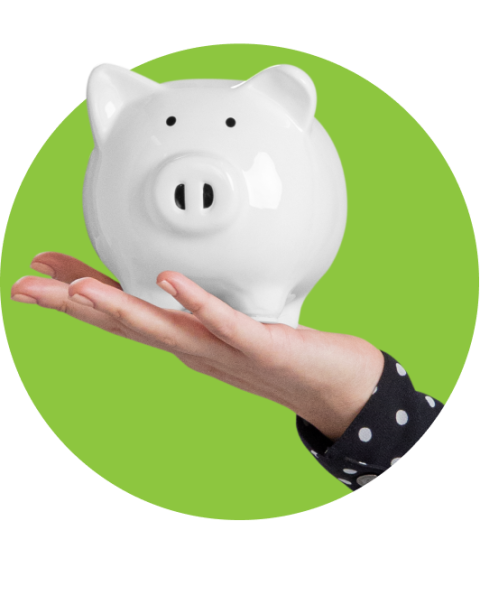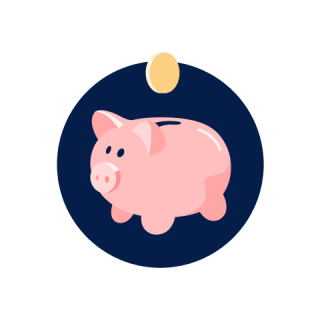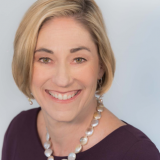Emergency Fund: What It Is and Why It Matters

Many or all of the products featured here are from our partners who compensate us. This influences which products we write about and where and how the product appears on a page. However, this does not influence our evaluations. Our opinions are our own. Here is a list of our partners and here's how we make money.
What is an emergency fund?
An emergency fund is a bank account with money set aside to pay for large, unexpected expenses, such as:
Unforeseen medical expenses.
Home-appliance repair or replacement.
Major car fixes.
Unemployment.

Why do I need an emergency fund?
Emergency funds create a financial buffer that can keep you afloat in a time of need without having to rely on credit cards or high-interest loans. It can be especially important to have an emergency fund if you have debt, because it can help you avoid borrowing more.

How much should I save?
The short answer: If you're starting out, try to set aside an amount that would cover an important bill, say $500. But keep working your way up. You’ll want to max out at about half a year's worth of expenses.
The long answer: The right amount for you depends on your financial circumstances, but a good rule of thumb is to have enough to cover three to six months’ worth of living expenses. (You might need more if you freelance or work seasonally, for example, or if your job would be hard to replace.) If you do lose your job, you could use the money to pay for necessities while you find a new one, or the funds could supplement your unemployment benefits.
Having savings can get you out of many financial scrapes. Put something away now, and build your fund over time.
» Looking for top savings options? Here are our picks for the best savings accounts overall

Where do I put my emergency fund?
Ideally, you'd put your emergency fund into a savings account with a high interest rate and easy access. Because an emergency can strike at any time, having quick access is crucial. So it shouldn’t be tied up in a long-term investment fund. But the account should be separate from the bank account you use daily, so you’re not tempted to dip into your reserves.
A high-yield savings account is a good place for your money. It is federally insured up to $250,000 per depositor, per ownership category, per financial institution so it’s safe. (Read more on how savings accounts are federally insured through the Federal Deposit Insurance Corp., or FDIC, and the National Credit Union Administration, or NCUA.) In addition, the money earns interest, and you can access your cash quickly when needed, whether through withdrawal or a funds transfer.
While a savings account is an excellent option, some people may not be able to open one immediately. If a bank closed a previous account of yours, for example, it may have reported the closure to a consumer reporting agency, such as ChexSystems. That can prevent a new bank from approving your account application. If that’s the case, you have options. You can work with the agency to resolve the outstanding issues. At the same time, consider opening a second chance checking account. After a few months building a positive banking history, you’re more likely to be able to open a solid interest-earning account.
⏰ Limited-time offer
at SoFi Bank, N.A., Member FDIC
Don’t miss out on a bigger bonus
Get a NerdWallet-exclusive bonus of up to $400 when you open an account and hit $5,000 in direct deposits within 25 days after your first one. That’s $100 more than SoFi’s normal $300 bonus! Select "Learn More" to get started. Expires 4/22/24. Terms apply.
How do I build an emergency fund?
Calculate the total that you want to save. Use the NerdWallet emergency savings calculator below if you need help figuring out your expenses for six months.
Set a monthly savings goal. Instead of focusing on one large savings goal, focus on smaller, attainable monthly goals. Reaching monthly milestones can give you positive momentum and encourage you to keep saving. This can help you keep the habit of saving regularly and make the overall task less daunting.
Move money into your savings account automatically. If your employer offers direct deposit, ask if they can divide your paycheck between checking and savings. That way your monthly savings goal can be taken care of without the funds touching your checking account.
Keep the change. Use mobile technology to save automatically each time you make a purchase. There are savings accounts and savings-focused apps that link with checking or other spending accounts to round up the purchase amounts on your transactions. The extra amount is automatically transferred to a savings account.
Save your tax refund. You get a shot at this once a year — and only if you expect a refund. Saving it can be an easy way to boost your emergency stash. When you file your taxes, consider having your refund deposited directly into your emergency account. Alternatively, you can consider adjusting your W-4 form so that you have less money withheld. If modifying your deductions is a good option for you, you can direct the extra cash into your emergency fund.
Assess and adjust contributions. Check in after a few months to see how much you’re saving, and adjust if needed. When you’ve saved up enough to cover six months of expenses, you might consider putting extra cash in investments.
» Here’s what to do if you think you might have too much in your emergency fund.
When saving, draw a line between emergencies and everything else. In fact, once you’ve hit a reasonable threshold of emergency savings, it’s a good idea to begin another "rainy day" savings account for irregular but inevitable expenses, such as car maintenance and clothing. If you need help staying organized, consider opening separate savings accounts or subaccounts for different financial goals.
Everyone needs to save for the unexpected. Having something in reserve can mean the difference between weathering a short-term financial storm or going deep into debt.
Use this calculator to get started. It takes only a few minutes:
On a similar note...
Find a better savings account
See NerdWallet's picks for the best high-yield online savings accounts.
⏰ Limited-time offer
4.60%
With $0 min. balance for APY
$400
Limited-time offer
Up to $300 cash and $100 in rewards points. Terms apply.



